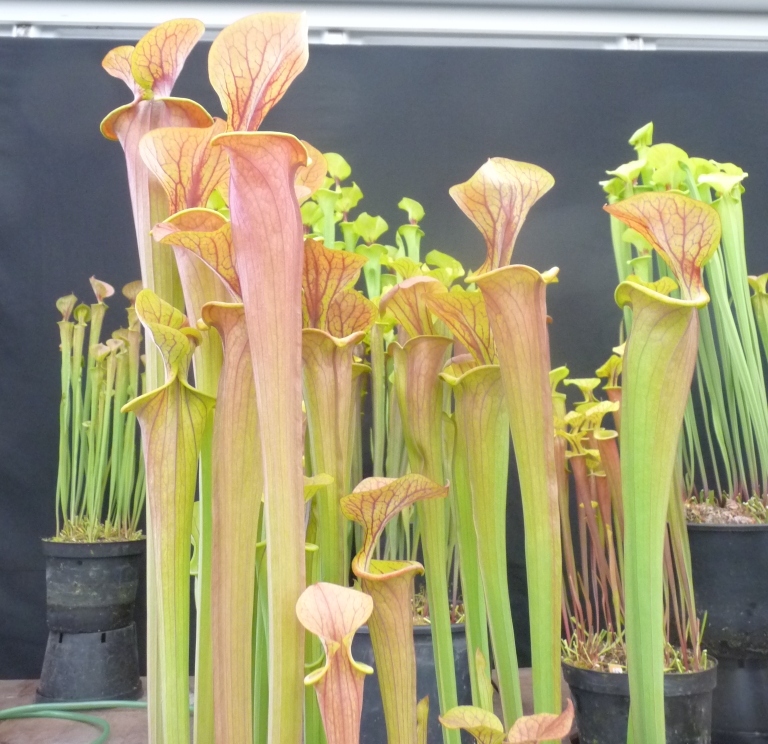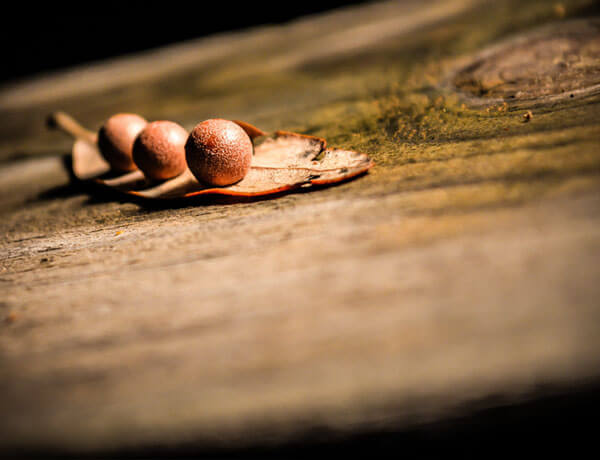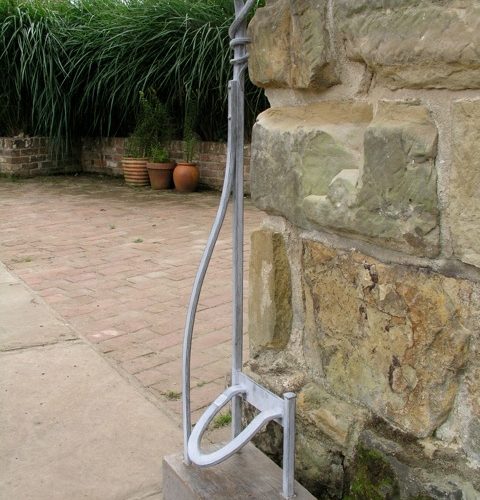-
Plants that Bite
Whether it’s watching the jaws of a Venus flytrap snap shut or seeing an insect stick to the gluey pads of a sundew, children are fascinated by carnivorous plants. Curious, bizarre and sometimes, downright creepy, many of these plants grow naturally in tropical parts of the world, but will thrive in the shelter of a greenhouse in a cooler climate. Although they can be grown individually in pots, you can make better use of the space and create an eye-catching feature by combining several plants in a large planter.
What to grow
There are lots of great insect eating plants to try. Venus fly trap (Dionaea muscipula) is very popular, but look out for more shower varieties, such as ‘Bohemian Giant’, which has red leaves and ‘B52’ – it is one of the largest you can grow with traps more than 5cm across.
Pitcher plants or sarracenias are very dramatic, with upright pitchers partially covered with lid. Among the varieties worth growing are Sarracenia purpurea, a short, stocky plant with purple veined pitchers and S. ‘Stevensii’, which is a taller species with white splashed pitchers.
Other ideas for plants worth growing are butterworts, bladderworts and sundews, which form rosettes of sticky leaves. If you want to grow something really scary, try a cobra lily – its curved pitcher looks like a snake about to strike.How to plant it
Choose a large container – a 30cm, 12in pot is ideal for about four or five different plants, depending on their size and habit of growth. Make sure the pot has drainage holes in the base – if it only has one large hole in the centre, cover this with some broken bits of pots to prevent the hole from clogging up with compost.
Now fill with a suitable compost, leaving a 2cm gap between the surface of the compost and the lip of the pot. In the past, pure peat was recommended, but there are plenty of peat-free alternatives including Cocopeat, Moorland Gold and Thrive.
Arrange plants on the surface of the compost. Once you’re happy with the display, remove the pots, dig holes with a trowel and plant so the rootball sits at the same level as the compost. Firm each plant gently into place with your finger tips.Looking after them
For healthy plants, keep the compost moist at all times using rain water from a water butt (ask an adult to fit one to your greenhouse if it doesn’t have one) – it’s fine to use water from a tap in an emergency, but the chemicals in the water will harm the plants if used regularly. You can ensure the compost never dries out by placing a tray or large saucer under the pot, topping it up whenever it runs dry. Other than this, all you need to do is snip off any dying leaves or flowers, and tug out any weed seeds that appear.
This article was written for The Enduring Gardener by Martyn Cox.













